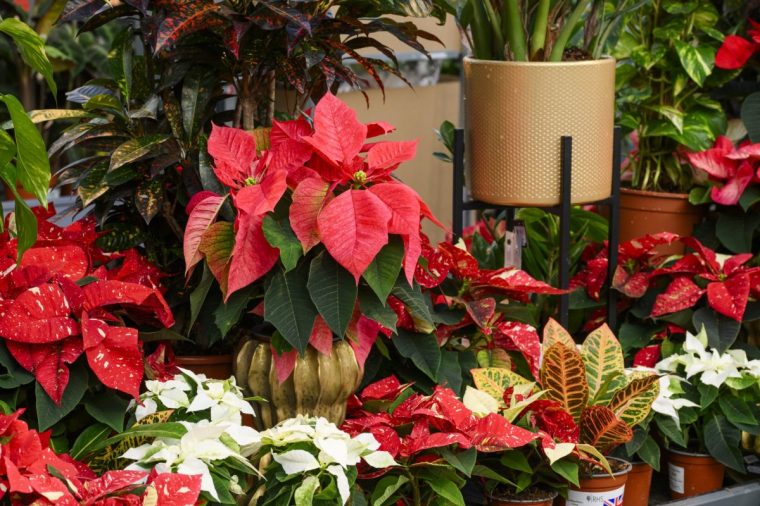Poinsettias and azaleas are two of the most interesting and rewarding Christmas house plants, grown in their millions at this time of year. Unfortunately, by their nature, they are “throwaway” plants – although they can give prolonged colour if well-bought and cared for, with azaleas having a fair chance of persisting into next year.
Azaleas are derived from Rhododendron simsii, a forest plant cultivated and developed for centuries in east Asia. Since the 19th century, they have been a specialised crop in Europe, mostly grown in Belgium.
Careful watering is fundamental for azaleas, ideally with rainwater or water from a dehumidifier. These are mildly acid and ideal for all rhododendrons. Plunge plants into a container of water at room temperature then, once no more air bubbles appear, allow the plant to drain. These thirsty plants often need watering every day or two.
Hot, dry rooms shorten the plant’s life; cooler, bright rooms are preferred, frost-free porches or conservatories suit them well. Neither do they appreciate fluctuating temperatures – a steady 10 to 15C well away from radiators is ideal.
Dead-heading prolongs flowering which can go on for weeks. After flowering, apply a weekly feed and because their pots are tight with roots, replant into a slightly bigger one using ericaceous (acidic) potting compost. Shorten lengthy shoots by half. Once the risk of frost has passed, put them outdoors under light shade. Traditionally, the practice was to “plunge” the pot into border soil to keep the roots cool and to slow drying out, which is good practice if you can maintain thorough watering.
Buy bushy plants with ample unopened buds and no yellowed leaves, planted with only one cutting per pot (count the stems) – many have three cuttings, leaving them hopelessly overcrowded if you want them to last.
Poinsettias (Euphorbia pulcherrima), in contrast, are shrubs from rocky hillsides in Mexico, widely grown in the tropics for hedges, and elsewhere as 25 to 40cm house plants in Europe and especially North America, where the modern Christmas cultivars originated.

Their flowers are inconspicuous –what we admire are the leaves or “bracts” around the flowers that are usually bright red but can be white, cream, apricot or marbled pink and white. They flower best in shorter days. To be at their best for Christmas, they are kept in greenhouses at 18 to 20C with 14 hours of darkness for eight weeks until the bracts develop. This is tricky at home and if plants survive, they won’t flower until spring in future.
Water from above and only when the plant is getting dry, when the compost will be dry to the touch. Over-watering is very damaging; tepid tap water is ideal. Keep in bright light for the best bract colour. Weekly tomato fertiliser feeds are helpful for this temperamental plant, as well as warm (13 to 21C), but not hot, and dry conditions. They especially resent draughty fireplaces and windowsills, indicated by leaf and bract loss. Avoid contact with their irritant sap. They should last 12 weeks if bought well.
Buy compact, stocky plants with three to four fresh-looking bracts and leaves. Avoid ready-wrapped plants which are hard to inspect for deterioration, and especially avoid ones subjected to street conditions. Having chosen a good plant, take it straight home without it being too long in a chilly car. Warm garden centre greenhouses or new deliveries to supermarkets are reliable sources of this indispensable Christmas colour.


